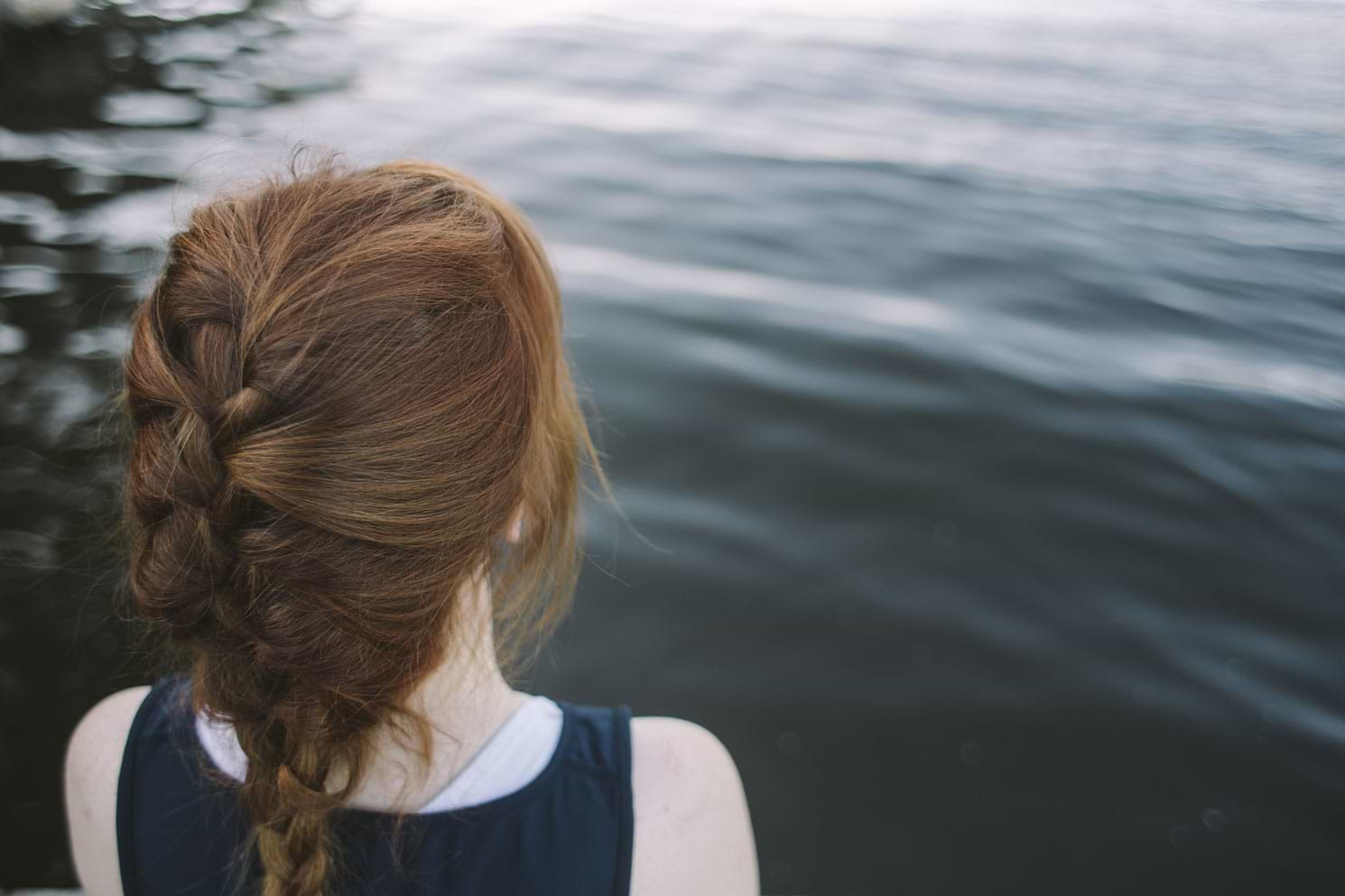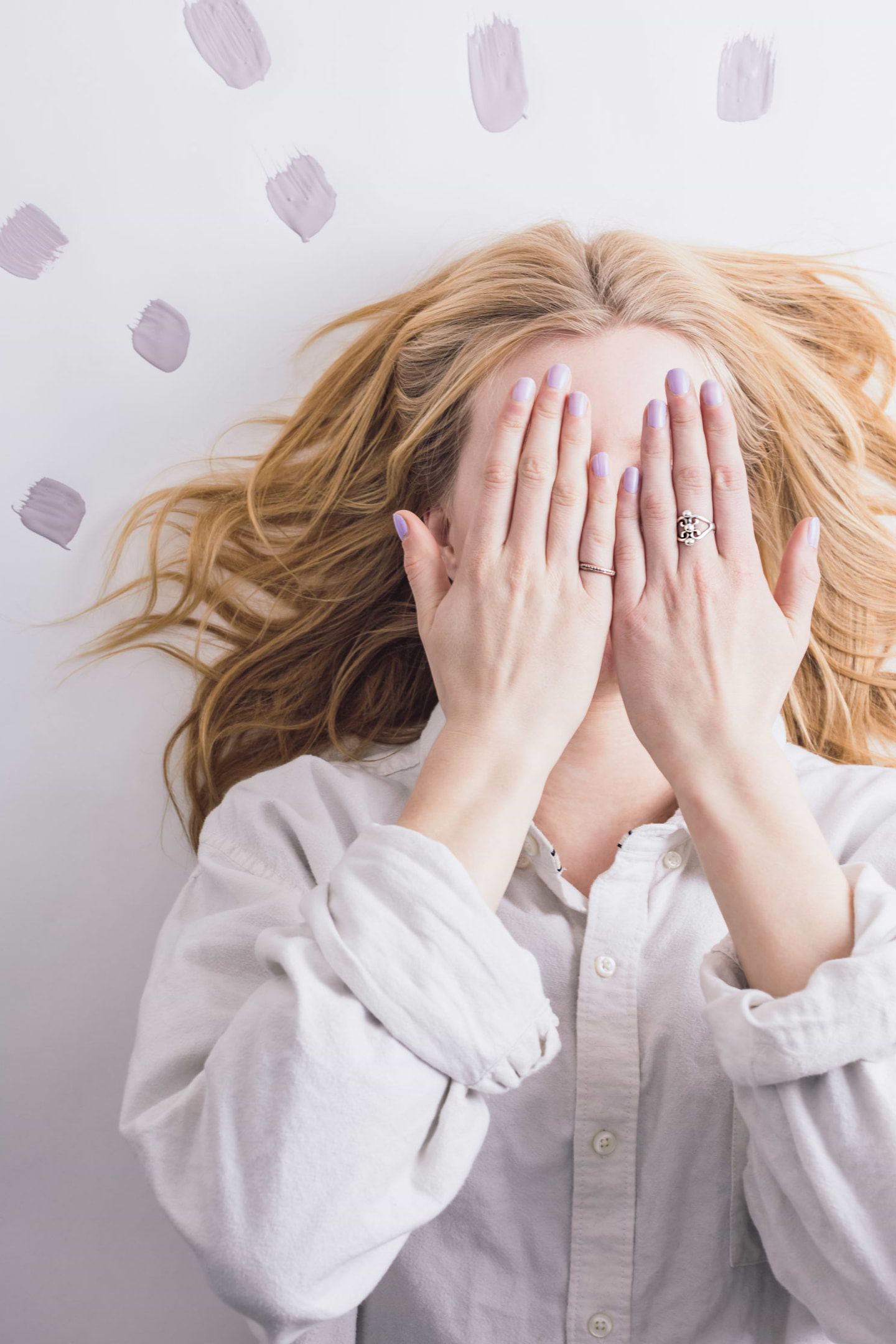Welcome to thoughtful, organic beauty
Hello Joyous is an organic, plant-based, sustainable beauty brand here to bring more joy to your day.
I have done a lot of colouring my hair over the years. During high school and university, it was my beauty treatment of choice when I was feeling bored with my look (which, as often happens in your teens and early 20s, was about every three minutes).
Over the course of about a decade, my naturally dark brown hair ran the gamut from fire-engine red (I watched Run Lola Run at least once a week), to a shade of purple Prince would’ve been proud of to Morticia Addams blue-black (that one was a mistake that resulted in a $300 trip to the salon for a colour correction). Drugstore box colour was my weapon of choice, but I wasn’t afraid to experiment, and lemon juice, henna and Kool-Aid all ended up in my hair at some point.

All of this was before I developed an interest in natural beauty, or much interest in my health (teenagers are indestructible, don’t you know?), so I didn’t really think much about the ingredients. All I knew about ammonia and formaldehyde was that it was the stuff the grade 12 biology lab smelled like due to storing all those dissection specimens.
Hair dye formulas, both salon and drugstore varieties, have gotten a lot better since Jean Harlow’s trademark platinum blonde may have contributed to her early death, but modern blonde bombshell Lady Gaga has still Instagrammed that bleaching her hair is so painful she takes anti-inflammatories for it. If just getting it done is painful, who knows what the long-term effects might be?

Even if you don’t bleach your hair before colouring it, many salon and drug store hair dyes contain less-than-healthy chemicals like Quaternium-15 (which can release carcinogenic formaldehyde), potentially endocrine-disrupting alkylphenol ethoxylates and skin irritating phenylenediamine. These aren’t necessarily things you want near sensitive and thin scalp skin. Many hair colour brands will add a few plant extracts and add “natural” or “organic” to the name. Keep in mind that, unlike food, “organic” is not a regulated term. Anyone can put the term on a box of hair dye without the need to prove the safety of its contents.
There are, however, more natural options options out there if you’re looking to make a change or get rid of grey. (Although, personally, I’d be on board with letting things go grey naturally because you’d be so on trend right now and save so much money!)
Home Options
If you’re a DIY dyer, you’ve got an option that goes all the way back to antiquity. Henna has been used to colour hair since ancient Egyptian times, and is still widely available today. Straight henna gives a bright red hue, but henna can also be mixed with other ingredients – such as chamomile, lemon and indigo – to provide a range of shades from blonde to dark brown.
Personal anecdote: henna pastes, especially if you make your own, can be a bit unpredictable, so newbies may want to start with a commercial henna formula. Henna pastes can also be very messy. My husband has told me that if I want to try using henna again, I’m going to have to stay in the bathtub the entire time until I’m ready to rinse. For months after my henna experiment, we were finding chunks of dried henna paste in little nooks and crannies in the bathroom.

If you really feel like getting experimental, you can look to your kitchen cabinet. Drugstore box colours are often named after food (I myself can remember dying my hair Espresso, Chocolate Cherry and French Toast), so why not go straight to the source?
Like henna, these at-home options work best as tints to enrich a natural colour, so if you’re looking to change your colour entirely, you’re best off checking out salon options. You’ll also want to keep in mind that results can be even more unpredictable than henna when experimenting with food-based dyes, so you might want to start slow.
Brunettes: To make brown shades richer and darker, you can try coffee or black tea. Just add one cup of strongly brewed coffee or heavily steeped (3-5 bags) tea to two cups of leave-in conditioner. For an intense dark brown, you can try crushing walnut shells, boiling them for half an hour. Allow the mixture to cool, then strain the shell remnants out before applying to hair and leaving the mixture on for at least an hour.
Redheads: If you’re not feeling in the mood for henna, you can try brightening up with beet juice (for strawberry blondes, deeper reds and auburns, depending on your natural colour) or carrot juice for a more orangey red. Just add a cup of juice to your hair and let set for at least an hour.
Blondes: Try brightening up naturally blonde hair with chamomile tea using the same instructions as for brunettes with black tea. You can also try using lemon juice to get sun-kissed highlights. Brush the lemon juice in and let it sit for several hours. If you spend some time in the sun, the results will be even more noticeable.
Salon Options
If you want to make a dramatic change to your hair colour, or cover a lot of grey, it’s tough to do with food-based dyes, so a trip to the salon is probably in order. Check with stylists and salons in your area and find out what kinds of hair colouring products they offer. While there will be chemicals involved in order to get the dramatic, lasting results we expect from salon colour, Brands like LaBiosthetique, Hnectar, and Radico Color Me Organic are offering options that are free (or almost free) of the most dangerous chemicals. These types of colours tend to come in the more natural blondes, reds and browns, so the latest unicorn hair trend won’t necessarily be on the menu.
Another way to make salon colour healthier is to ditch all-over colour in favour of balayage-style highlights, since this style of hair colour concentrates the colour on the ends and less likely to come into contact with your scalp.

Full disclosure: while writing this article, I’m rocking a full head of purple ombre highlights that are of a colour definitely not seen in nature … unless you’re a tulip. (See the colour of the subheadings in this article for reference.) The key is to be informed and know your options as a consumer. But sometimes, you’ve just got to do you! ;)
Share your haircolour stories – the good, the bad, and the retrospectively embarrassing – with me in the comments below!
I'm curious if you have a 'safe' commercial Henna hair colour brand you could recommend? Thank you for the great article and sharing this info!
ReplyHi Stephanie! So glad to hear you enjoyed the article :) I've personally been looking at the Henna hair dyes from Lush cosmetics and the ingredients look really good! Let us know if you find one that you love. Heather- Joyous Health team
Hi Stephanie, The Lush one that Heather mentioned is the one I used. Just bear in mind that it needs to be melted on the stove (it comes in solid bricks) and the paste is MESSY! If you can, I highly recommend setting yourself up with something that can access Netfilx in the bathroom and staying there for the couple of hours it take the dye to set! Kate - Joyous Health Team
My hair has never looked better than changing to organic shampoo and coconut oil before hand. And henna neutral once every 1-2 months. Make sur pure henna no additives, super cheap!
ReplyThat's amazing, Artemisia! Thanks for sharing. Heather- Joyous Health team
I've been using Oway's Hnectar color since they launched it late last year. Amazing stuff if you can make it to the salon. Henna isn't really an option for those of us who like to get highlights from time to time and need to cover grey (I've seen hair melt off because of henna - scary stuff)!
ReplyYikes! Yes, it's definitely super important to make sure you are getting safe products when it comes to anything you put on your body. Even in the natural world, things can go awry. Glad to hear you've found one you love. Thanks for sharing, Amber. Heather- Joyous Health Team
Oh my goodness Kate...sounds just like me and all my hair coloring stories. I started with sun-in and henna in high school and I had the same expensive blue-black experience as you (it really made me look like a vampire)! Now I color my hair to cover grays and I've been thinking I really should look for something safer so thanks for the info.
ReplyHi Andrea, Happy to help! Yeah, blue-black looked so cool on the box, but was definitely not for me. :) Kate - Joyous Health Team
Hi, thanks for the commentary on colouring hair. I started colouring my hair in my early twenties and did it to change my looks and also be creative. Over the decades it became a habit going to the hairdresser to colour and with short hair, the application of colour was every 5 weeks. The alternatives instead of full colour was to streak blond/platinum to start to hide the grey hair coming in. A few years ago I decided enough was enough. If I am not drinking the stuff, why al I putting it on my scalp. I used good quality hair colour, natural colours etc but I thought it was time to stop. I was worried that having grey hair would age me but it hasn't. I make sure that I wear colours, interesting earring and eyeglasses that pop. I have colleagues who having watched me do through the process of weaning off of colour and have started it themselves.
ReplyHi Louise! That's so great to hear. And good for you for inspiring others to do the same :) Love the skin you're in Heather- Joyous Health Team
Hello! I have been going to a wonderful gal named Gina in Whitby. She owns her own henna hair salon. She buys direct from an organic henna farmer (I've forgotten the location). She's super knowledgeable, and it works great! I love, love, love it and have been going to her for over a year now. Highly recommend. http://www.hennahairsalon.com/
ReplyThanks for sharing, Sarah! Heather- Joyous Health Team
I've been going to Gina in Whitby too for the past two months. Love my hair now without all the nasty chemicals (and Gina is great too).
Great Blog ! Nice hair style. Thank you for sharing this post.
ReplyThanks!
How about Aveda products?
ReplyHey Christine! You can typically find better formulated and cleaner products out there. We really love EWG's Skin Deep to check how clean and non-toxic products are. Maybe you will too? http://www.ewg.org/skindeep/ Rachel - Joyous Health Team
Any salons you recommend in Toronto?
ReplyI used to know of a green beauty salon uptown but they since closed so I'm not sure anymore. However, I've been going to Studio Fontana for years.
Hope that helps!